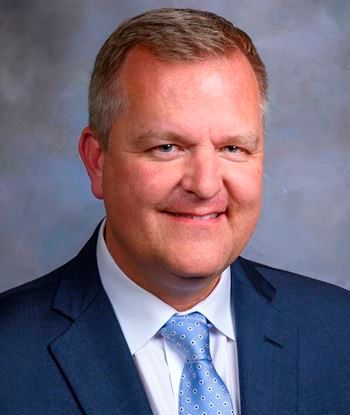Diversity in rural hospitals: Going beyond matching the community
Rural health systems struggle to attract talent. Sunny Eappen, president and CEO of The University of Vermont Health Network, stresses the importance of building a diverse staff.
Sunil “Sunny” Eappen, president and CEO of The University of Vermont Health Network (Photo: UVM Health Network)

Rural hospital executives acknowledge that it’s difficult to attract clinicians and other critical workers who may prefer to live in more urban settings.
It also becomes more challenging to bring workers from minority communities to areas where most of the residents are white.
Sunil “Sunny” Eappen, president and CEO of The University of Vermont Health Network, talked about the challenges at a forum on rural hospitals last week. In Vermont, 94% of the state’s residents are white, according to U.S. Census data. Only 2.2% of state’s residents are Hispanic, and only 1.5% of Vermont’s residents are Black.
Eappen said the system’s service area, which also includes northern New York, does have some diversity, including Native Americans and Black residents. While hospital executives in very diverse areas say they want their staff to reflect their communities, Eappen said his goal is different.
“We've taken the stance that we need not to match our community but exceed it,” Eappen said.
He said the system aims to be a role model of the value and creativity that comes from diversity.
“Inclusiveness means that you can bring your whole self into work, and that goes beyond race and ethnicity, but sexual orientation, gender identity, that you can be yourself and come to work here and we're going to be better as a result of it,” Eappen said. “So that's the model that we are putting out. We recognize we have a lot of work to do.”
(You can watch the rural hospital forum in this video from Dartmouth Health. The story continues below.)
Andrew Mueller, CEO of MaineHealth, said it’s critical to develop a more diverse staff to close disparities in care in underserved communities.
“We have a real opportunity and obligation now to continue to focus on health equity, and ensure that we really are treating our communities in a similar fashion,” Mueller said in the roundtable.
“There is diversity there,” Mueller added. “We just have to continue to look for it.”
Andrew Mueller, CEO of MaineHealth (Photo: MaineHealth)

Mueller said diversity in the workforce isn’t just a goal but a necessity for health systems such as MaineHealth that serve rural communities.
“We're not going to have enough of a healthcare workforce to sustain our organizations in the future unless we recruit from outside of our area,” Mueller said. “And the reality is the rest of our nation is becoming less white. And so we've got to be able to attract a more diverse workforce.”
The executives during last week’s panel outlined some of the difficulties in recruiting talent, including a lack of affordable housing. They say some workers have turned down jobs because they couldn’t find suitable homes they could afford. Physicians can earn more in urban areas, which is a key factor in repaying student debt of $100,000 or more.
It’s also critical to get more candidates from minority careers to pursue careers in medicine, in rural areas and nationwide, Eappen said.
“We have to reach out and make even greater efforts to be able to connect with folks that have typically been disenfranchised from coming to join us,” Eappen said.
It’s important to acknowledge that adding diversity into the healthcare workforce will require additional effort, he added.
“It means taking that extra effort and saying that it's okay to do that,” Eappen said, adding, “Yes, I'm going to make an extra effort. It's not going to be the same effort. I'm going to make more of an effort and that it's okay to do that. It's not universally accepted that that's okay.”
Some states have been pushing legislation to limit colleges and universities from using public funds to expand diversity efforts. The Association of American Medical Colleges has spoken out against efforts to weaken diversity policies. The AAMC argues that it’s critical to develop a more diverse physician workforce to serve a more diverse country and to offer better healthcare to all populations, including underserved communities.
Eappen also stresses addressing diversity along with other challenges, such as lower cancer screening rates for members of minority groups.
“We've got to take those on as part of that same work, of what we need to do differently, both structurally as well as in the way that we think about how we're going to get equitable care out there,” Eappen said.
Rural hospitals account for about 35% of all of America’s hospitals, and many rural hospitals are battling steep financial difficulties. Since 2010, 136 rural hospitals have closed, according to an American Hospital Association report.
Read more: Rural healthcare is at a breaking point: Dartmouth Health CEO Joanne Conroy
Newsletter
Get the latest hospital leadership news and strategies with Chief Healthcare Executive, delivering expert insights on policy, innovation, and executive decision-making.